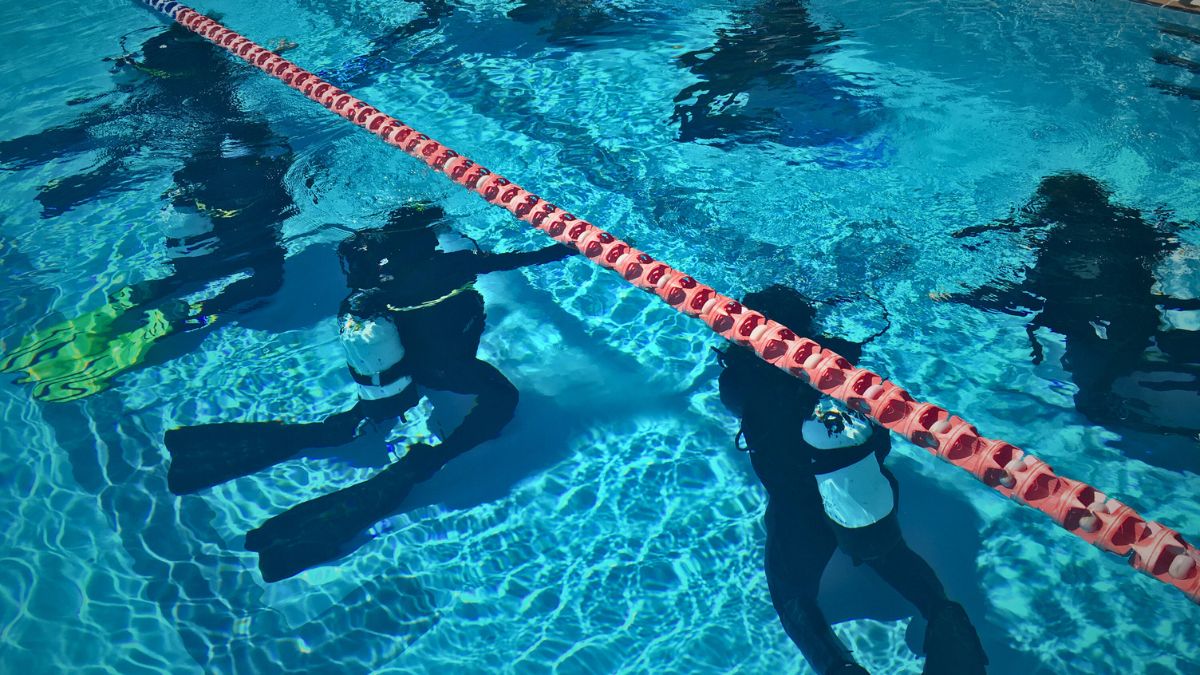Choosing a scuba diving instructor is one of the most important decisions you will make on your underwater journey. Your instructor holds your safety in their hands and teaches you skills that will stay with you for life.
But how do you know if your instructor is properly qualified? How can you verify they have active certification and current teaching privileges? In this guide, I will walk you through exactly how to check a scuba instructor’s credentials, why this matters for your safety, and what to look for when reviewing their qualifications.
Did you know? PADI instructors must renew their teaching status every single year. Without this renewal, they cannot legally certify students, even if they hold an instructor certificate.
Scuba diving is an incredible activity that opens up an entire world beneath the surface. But it is also a technical skill that requires proper training from qualified professionals.
Unlike many other recreational activities, diving mistakes can have serious consequences. You are learning to breathe underwater, manage equipment, and understand pressure changes that affect your body. These are not things you want to learn from someone who is unqualified or whose certification has lapsed.
When you skip verifying your instructor’s credentials, you are taking unnecessary risks. An instructor without active status cannot legally issue certifications. This means you might complete your course, pay your money, and then discover your certification is not valid.
Worse, an unqualified scuba instructor may not have current safety training. Diving federations require regular refresher courses for good reason. The industry evolves, safety protocols improve, and instructors need to stay current.

Checking your instructor’s credentials ensures several important things. First, you confirm they have completed the rigorous training required to become a diving instructor. Second, you verify their teaching privileges are active and up to date. Third, you check that they maintain required insurance coverage.
This verification process takes less than two minutes and gives you peace of mind that your instructor meets professional standards. Any reputable instructor will gladly provide their credentials and encourage you to verify them.
PADI Pro Chek is a free online tool that allows anyone to verify a PADI professional’s credentials and current status. PADI is the world’s largest diving organization, and this tool provides instant access to instructor information.
The system is simple, transparent, and designed specifically to protect students and divers. It puts verification power directly in your hands.
To use PADI Pro Check, you only need one piece of information: your instructor’s PADI member number.
Every PADI professional has a unique member number. Your instructor should provide this number willingly and without hesitation. In fact, many professional instructors include their member number on business cards, websites, and promotional materials because they are proud of their credentials.
If your instructor is reluctant to share their member number or seems evasive about verification, consider this a red flag. Professional instructors understand that verification is part of good business practice and student safety.

Using PADI Pro Chek is straightforward. Here is exactly what you need to do:
Step 1: Visit the official PADI website at https://apps.padi.com/scuba-diving/pro-chek/
Step 2: You will see a simple form with one field labeled “Member Number.” Enter your instructor’s PADI member number here.
Step 3: Click the “Submit” button.
Step 4: The system immediately displays your instructor’s information, including their name, rank, teaching status, and renewal date.
The entire process takes less than 30 seconds. The website is available in English and Spanish, making it accessible to divers worldwide.
When you complete a PADI Pro Chek search, the results page shows several key pieces of information. Understanding what each element means helps you make informed decisions about your instruction.
The “Authorized to Teach” status is the most important indicator to look for. You will see a green checkmark icon next to this field if the instructor has current teaching privileges.
This green checkmark confirms that the instructor can legally conduct courses and issue PADI certifications. It means they have met all current requirements including education, experience, and standards updates.
If you see a red X or any other indicator besides a green checkmark, the instructor cannot currently teach PADI courses. This might mean their membership has lapsed, they are between renewal periods, or there is an issue with their standing.

The “Renewed” field shows whether the instructor has completed their annual membership renewal. Like “Authorized to Teach,” this should display a green checkmark.
PADI requires all professionals to renew annually. This renewal includes paying membership fees and confirming insurance coverage. The results also show an expiration date, indicating when the instructor must renew again.
This annual requirement ensures instructors remain connected to PADI, receive important safety updates, and maintain professional standards.
PADI has several instructor levels, and the Pro Check results display your instructor’s specific rank. Understanding these levels helps you know your instructor’s experience and capabilities:
Open Water Scuba Instructor (OWSI): This is the entry-level instructor certification. These instructors can teach courses up to Rescue Diver and some specialty courses.
Master Scuba Diver Trainer (MSDT): This rank indicates the instructor has certified at least 25 students and holds at least five specialty instructor ratings. These instructors have proven teaching experience and can offer a wider range of courses.
IDC Staff Instructor: These professionals can assist in Instructor Development Courses, helping train the next generation of diving instructors.
Master Instructor: This is one of the highest teaching ranks, requiring significant teaching experience and professional development.
Course Director: Course Directors can train and certify new diving instructors. They represent the highest level of PADI professional credentials.
You will also see additional certifications listed below the main instructor rank. For example, many instructors are also Emergency First Response (EFR) Instructors, which means they teach first aid and CPR courses.

While PADI is the largest diving organization, several other reputable federations certify divers and instructors worldwide. Each has its own verification system.
SSI (Scuba Schools International) provides consumer protection through their professional verification system. You can check SSI instructor credentials by visiting their consumer protection page at www.divessi.com.
SSI professionals carry a pro card with a QR code on the back. You can scan this code to instantly verify their current status through the MySSI system. Alternatively, you can enter the instructor’s professional number on the SSI website.
The process is similar to PADI Pro Chek and confirms the instructor’s qualifications, teaching status, and authorization levels.
NAUI (National Association of Underwater Instructors) also offers instructor verification through their website at www.naui.org. Their system requires the instructor’s name and certification number.
NAUI certification verification confirms the instructor’s credentials and ensures they maintain good standing with the organization.
Other respected diving organizations include CMAS, SDI/TDI, and BSAC. Each has its own professional standards and verification methods.
If you are training with an instructor from a smaller or regional organization, ask them directly how you can verify their credentials. Legitimate organizations provide some form of verification system, even if it requires contacting their headquarters directly.
Fun fact: PADI certifies more diving instructors than any other organization in the world, with professionals teaching in over 180 countries and territories.
Regardless of the organization, the key principle remains the same: reputable instructors from legitimate federations will always encourage you to verify their credentials.
Beyond credential verification, having a direct conversation with your instructor provides valuable insights into their experience and teaching philosophy.
Here are important questions to consider:
How many students have you certified? This gives you a sense of their teaching experience.
What is your personal diving background? Instructors who dive regularly outside of teaching often bring more enthusiasm and current knowledge to their courses.
What is your teaching approach? Some instructors focus more on theory, others on practical skills. Understanding their style helps ensure it matches your learning preferences.
What is your safety record? Professional instructors track their safety record and should be comfortable discussing it.
Do you dive in your free time? Instructors who are passionate about diving and continue to explore underwater show a deeper commitment to the activity.
At Costa Rica Divers, all of our instructors not only maintain active PADI credentials but also dive regularly for recreation. They continuously develop their skills through additional training and genuinely love sharing their passion for the underwater world.
Did you know? Becoming a PADI instructor requires at least 100 logged dives, completion of multiple courses, and passing both knowledge and teaching exams that typically take several days to complete.
When you are learning to scuba dive in Costa Rica, choosing the right dive center is just as important as verifying individual instructors.
Look for dive centers that are officially accredited by their diving federation. PADI 5-Star facilities, for example, meet higher standards for equipment, safety protocols, and instructor quality.
Ask about the dive center’s instructor-to-student ratios. Smaller class sizes provide more personalized attention and better learning experiences. At Costa Rica Divers, we maintain small groups to ensure every student receives individual guidance.
Check if the center’s equipment is well-maintained and appropriate for your size. Quality dive centers regularly service their gear and replace equipment as needed.
Read reviews from previous students, but also trust your instincts. When you visit a dive center, you should feel welcomed, safe, and excited about your upcoming training.
If you know the instructor’s full name, you can contact PADI directly through their customer service channels. PADI can help you verify credentials based on the instructor’s name, though having the member number makes the process faster and easier.
This is a serious red flag. Any legitimate, professional instructor will gladly provide their credentials and encourage verification. If an instructor is reluctant or refuses, look for a different instructor or dive center immediately.
PADI instructors must renew their membership annually. This renewal confirms they maintain insurance, stay current with standards, and remain in good standing with the organization. Other diving federations have similar renewal requirements.
Not necessarily. A Master Scuba Diver Trainer or Master Instructor has more experience than a newly certified instructor, but teaching quality depends on many factors including communication skills, patience, and passion. An entry-level instructor who loves teaching may provide a better experience than a higher-ranked instructor who is less engaged.
Generally, no. A PADI instructor can only issue PADI certifications. An SSI instructor issues SSI certifications. However, many instructors hold credentials with multiple organizations. If this matters to you, ask your instructor which federations they are certified with.
Yes. PADI certifications are recognized by dive operators and facilities worldwide. PADI is the largest diving organization, making their certifications among the most universally accepted. Other major federations like SSI and NAUI are also widely recognized internationally.
You can verify your instructor’s credentials at any time using PADI Pro Check. Your instructor’s member number should be on your certification card or course materials. If you have concerns about the validity of your certification, contact PADI directly.
Verifying your scuba instructor’s credentials is a simple step that protects your safety, ensures the validity of your certification, and gives you confidence in your training.
The PADI Pro Chek tool makes verification quick and easy. In less than two minutes, you can confirm your instructor has active teaching status, current credentials, and proper insurance coverage.
Remember, any professional instructor will welcome your verification. They understand that transparency builds trust and demonstrates their commitment to quality instruction.
When you are ready to start your diving journey, choose a dive center with verified, experienced instructors who love what they do.
Your underwater adventures should be filled with wonder, excitement, and safety. Proper instructor verification is the foundation for all three.

Author: Peter Sawicki
Peter Sawicki is a PADI instructor with many years of experience and hundreds of certified students to his name. He is a technical diver, cave explorer, and climbing instructor with a background that spans both big wall expeditions and demanding technical ice climbs. Recognized multiple times with the prestigious PADI Elite Instructor Award, Peter combines deep professional knowledge with a passion for sharing the world of adventure, both underwater and above it.


